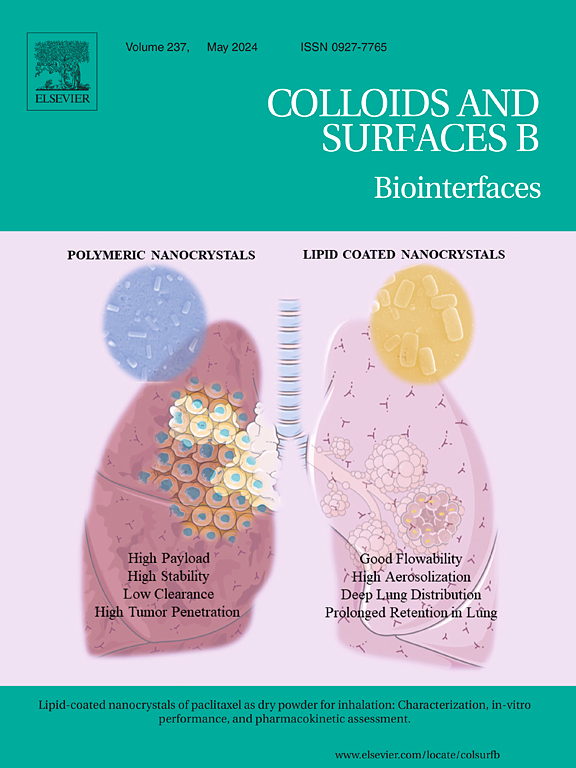All-in-one multifunctional tri-block glycopolymers for targeted delivery of cisplatin and cancer chemotherapy
IF 5.4
2区 医学
Q1 BIOPHYSICS
引用次数: 0
Abstract
Cisplatin (CDDP) as a first-line chemotherapy drug has long suffered drawbacks of severe side effects and poor pharmacokinetics. Thus, various nano-carriers of complex architectures and multi-step modifications have been developed to overcome these challenges, but a simple delivery system with integrated multi-functions is still in demand. Herein, we synthesized a new type of glyco-based triple hydrophilic block copolymers for the delivery of CDDP and thereof cancer therapy. The incorporated glucuronic acid part is complexed with CDDP with high entrapment efficiency, while providing pH-responsive release in the acidic tumor microenvironment. The galactose segment is implanted for liver-targeting effect, which can also significantly lower the side effects of CDDP. As a result, the CDDP-loaded nanoparticle PGG2/Pt showed selectively faster endocytosis rates into HepG2 cells in vitro, with the calculated IC50 value even comparable to that of free CDDP. The in vivo experiments on a HepG2-bearing mouse model, PGG2/Pt showed excellent anti-tumor activity and enhanced drug accumulation on tumor, together with much lowered nephrotoxicity, hepatotoxicity, and splenic toxicity. This work provides a new strategy for CDDP delivery with higher loading efficiency as well as biosafety.
求助全文
约1分钟内获得全文
求助全文
来源期刊

Colloids and Surfaces B: Biointerfaces
生物-材料科学:生物材料
CiteScore
11.10
自引率
3.40%
发文量
730
审稿时长
42 days
期刊介绍:
Colloids and Surfaces B: Biointerfaces is an international journal devoted to fundamental and applied research on colloid and interfacial phenomena in relation to systems of biological origin, having particular relevance to the medical, pharmaceutical, biotechnological, food and cosmetic fields.
Submissions that: (1) deal solely with biological phenomena and do not describe the physico-chemical or colloid-chemical background and/or mechanism of the phenomena, and (2) deal solely with colloid/interfacial phenomena and do not have appropriate biological content or relevance, are outside the scope of the journal and will not be considered for publication.
The journal publishes regular research papers, reviews, short communications and invited perspective articles, called BioInterface Perspectives. The BioInterface Perspective provide researchers the opportunity to review their own work, as well as provide insight into the work of others that inspired and influenced the author. Regular articles should have a maximum total length of 6,000 words. In addition, a (combined) maximum of 8 normal-sized figures and/or tables is allowed (so for instance 3 tables and 5 figures). For multiple-panel figures each set of two panels equates to one figure. Short communications should not exceed half of the above. It is required to give on the article cover page a short statistical summary of the article listing the total number of words and tables/figures.
 求助内容:
求助内容: 应助结果提醒方式:
应助结果提醒方式:


